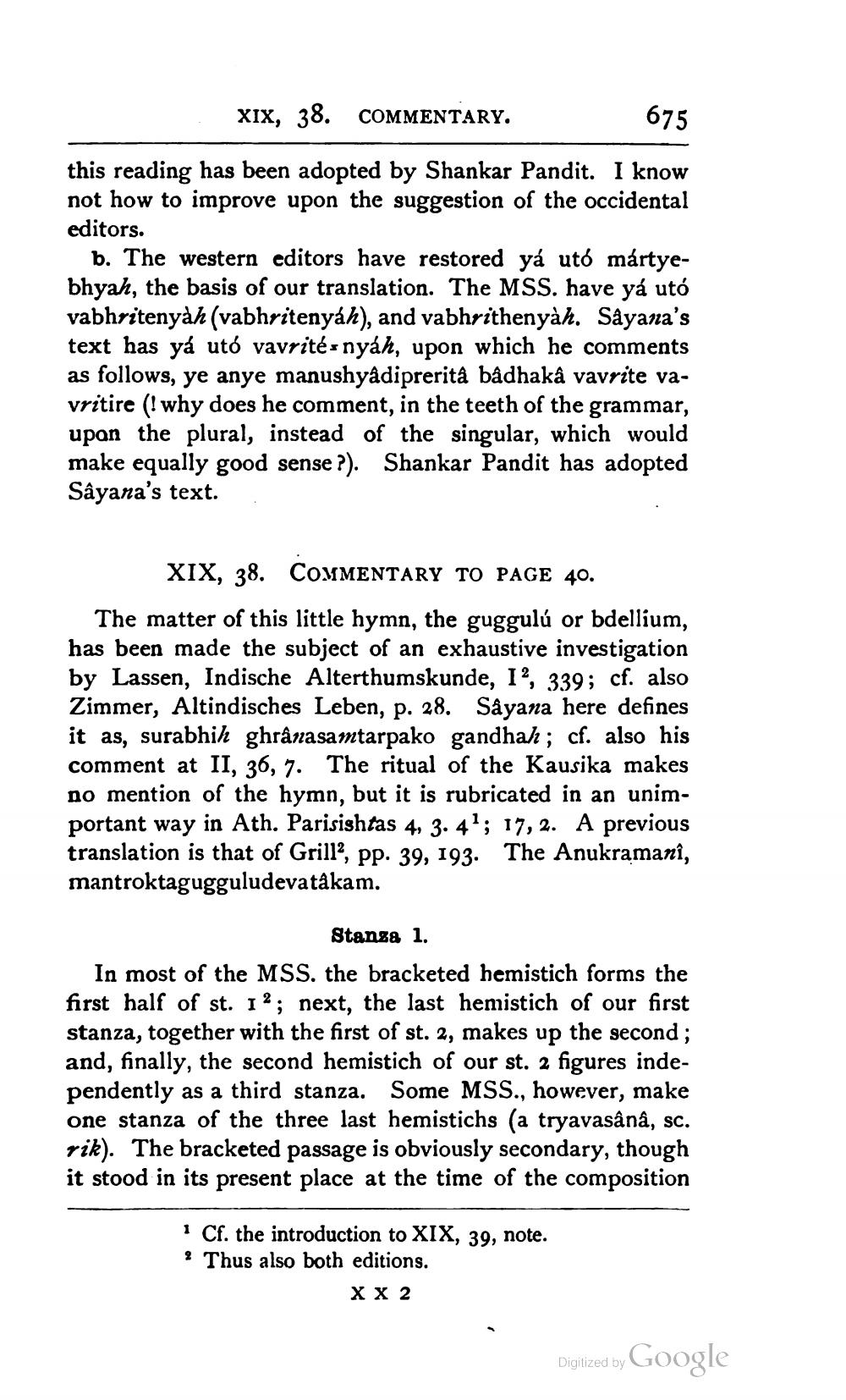________________
XIX, 38. COMMENTARY.
675
this reading has been adopted by Shankar Pandit. I know not how to improve upon the suggestion of the occidental editors.
b. The western editors have restored ya utó mártyebhyah, the basis of our translation. The MSS. have ya utó vabhritenyah (vabhritenyáh), and vabhrithenyàh. Sâyana's text has ya utó vavrités nyáh, upon which he comments as follows, ye anye manushyâdiprerità bâdhakâ vavrite vavritire (! why does he comment, in the teeth of the grammar, upon the plural, instead of the singular, which would make equally good sense ?). Shankar Pandit has adopted Sâyana's text.
XIX, 38. COMMENTARY TO PAGE 40. The matter of this little hymn, the guggulú or bdellium, has been made the subject of an exhaustive investigation by Lassen, Indische Alterthumskunde, 1?, 339; cf. also Zimmer, Altindisches Leben, p. 28. Såyana here defines it as, surabhih ghrânasamtarpako gandhah; cf. also his comment at II, 36, 7. The ritual of the Kausika makes no mention of the hymn, but it is rubricated in an unimportant way in Ath. Parisishtas 4, 3.41; 17, 2. A previous translation is that of Grill?, pp. 39, 193. The Anukramani, mantroktagugguludevatåkam.
Stanza 1. In most of the MSS. the bracketed hemistich forms the first half of st. 1?; next, the last hemistich of our first stanza, together with the first of st. 2, makes up the second; and, finally, the second hemistich of our st. 2 figures independently as a third stanza. Some MSS., however, make one stanza of the three last hemistichs (a tryavasânâ, sc. rik). The bracketed passage is obviously secondary, though it stood in its present place at the time of the composition
1 Cf. the introduction to XIX, 39, note. 2 Thus also both editions.
X X 2
Digized by Google




